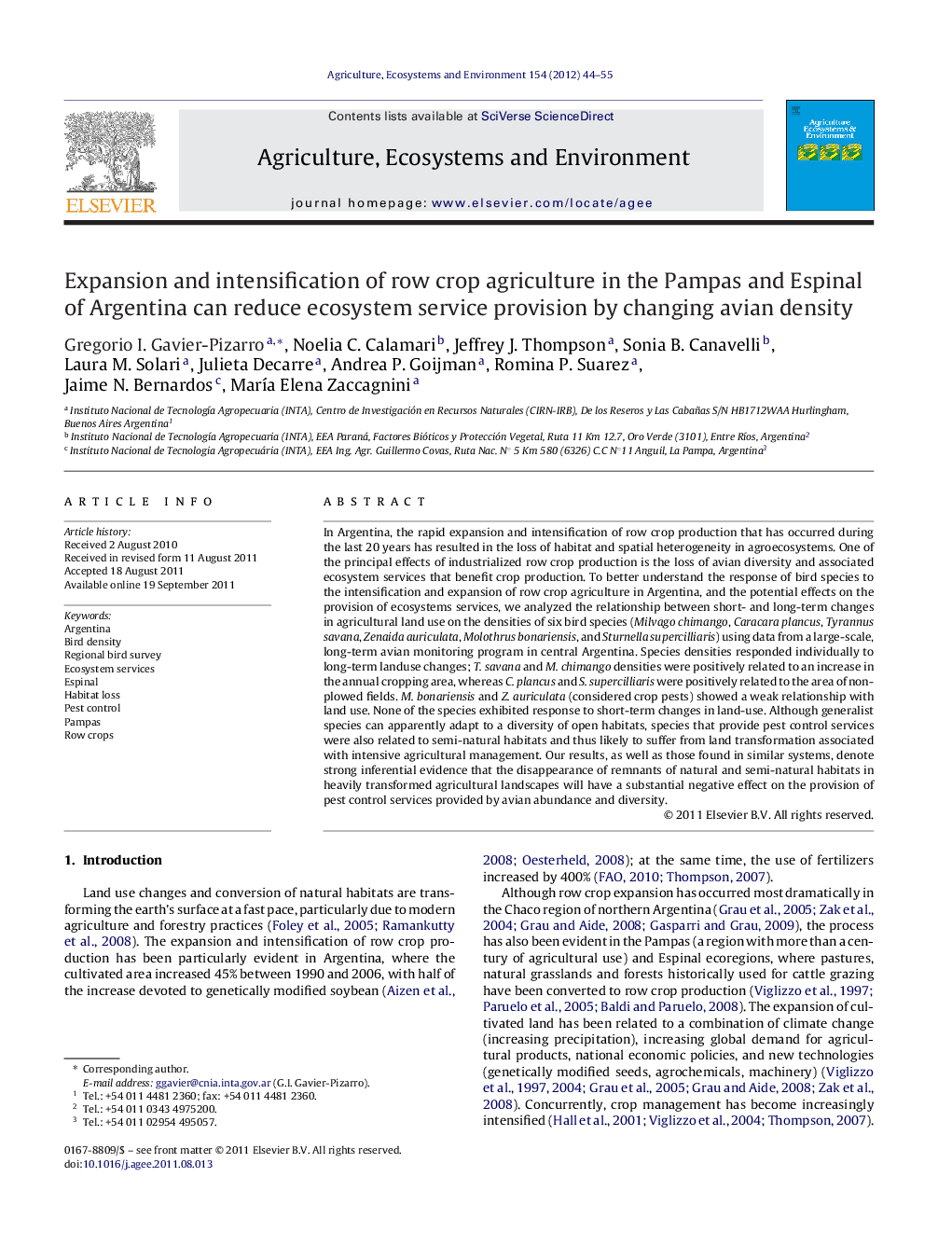| Article ID | Journal | Published Year | Pages | File Type |
|---|---|---|---|---|
| 2414460 | Agriculture, Ecosystems & Environment | 2012 | 12 Pages |
In Argentina, the rapid expansion and intensification of row crop production that has occurred during the last 20 years has resulted in the loss of habitat and spatial heterogeneity in agroecosystems. One of the principal effects of industrialized row crop production is the loss of avian diversity and associated ecosystem services that benefit crop production. To better understand the response of bird species to the intensification and expansion of row crop agriculture in Argentina, and the potential effects on the provision of ecosystems services, we analyzed the relationship between short- and long-term changes in agricultural land use on the densities of six bird species (Milvago chimango, Caracara plancus, Tyrannus savana, Zenaida auriculata, Molothrus bonariensis, and Sturnella supercilliaris) using data from a large-scale, long-term avian monitoring program in central Argentina. Species densities responded individually to long-term landuse changes; T. savana and M. chimango densities were positively related to an increase in the annual cropping area, whereas C. plancus and S. supercilliaris were positively related to the area of non-plowed fields. M. bonariensis and Z. auriculata (considered crop pests) showed a weak relationship with land use. None of the species exhibited response to short-term changes in land-use. Although generalist species can apparently adapt to a diversity of open habitats, species that provide pest control services were also related to semi-natural habitats and thus likely to suffer from land transformation associated with intensive agricultural management. Our results, as well as those found in similar systems, denote strong inferential evidence that the disappearance of remnants of natural and semi-natural habitats in heavily transformed agricultural landscapes will have a substantial negative effect on the provision of pest control services provided by avian abundance and diversity.
► Density of birds responded to long term but not to short term land use changes. ► Tyrannus savanna and Milvago chimango were more related to annual crops. ► Caracara plancus and Sturnella supercilliaris were more related to natural habitat. ► Common pest control related birds adapt to a substantial level of land transformation. ► Remnants of natural habitats are necessary to sustain pest controls services.
